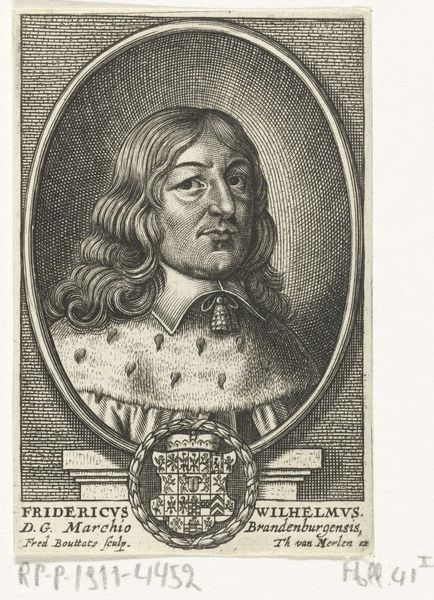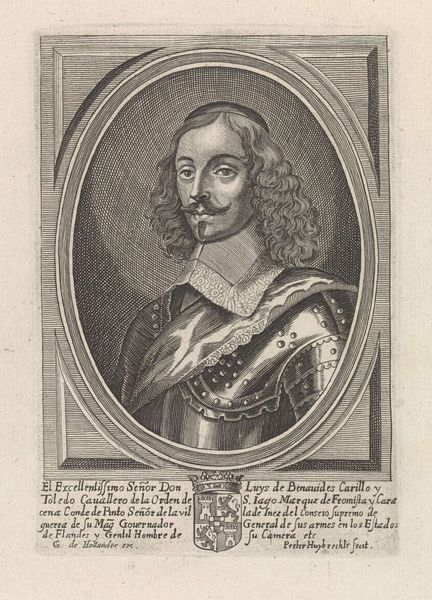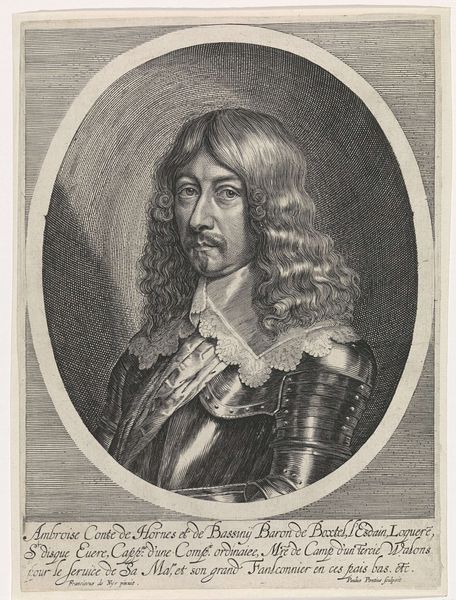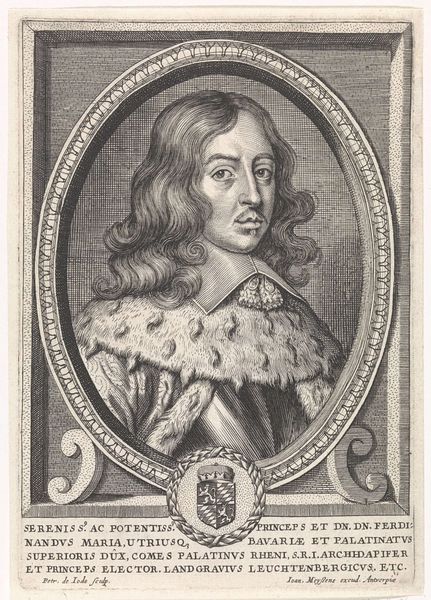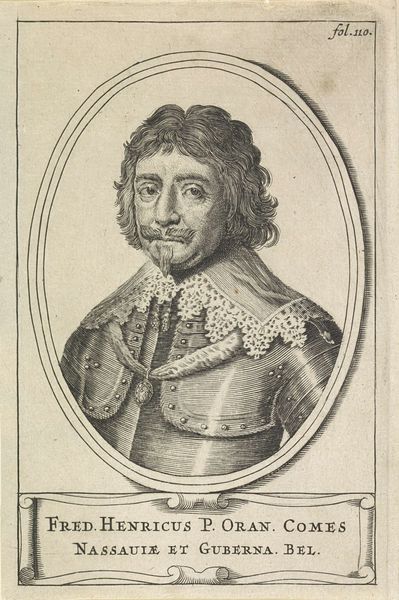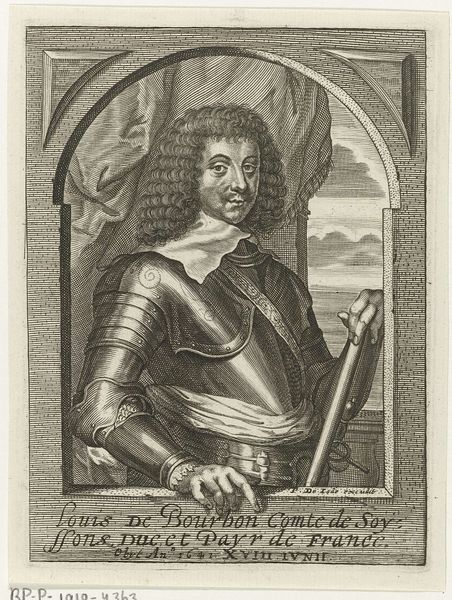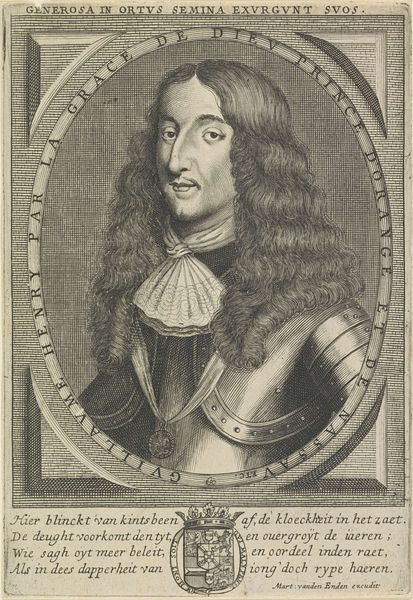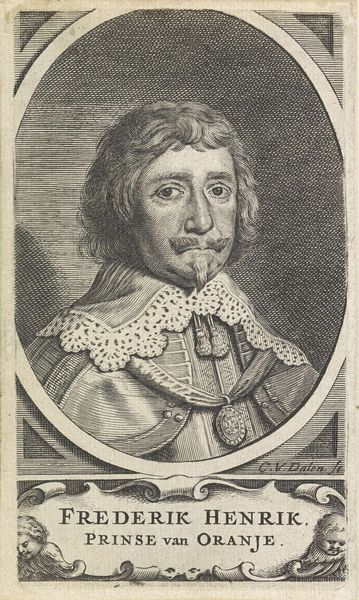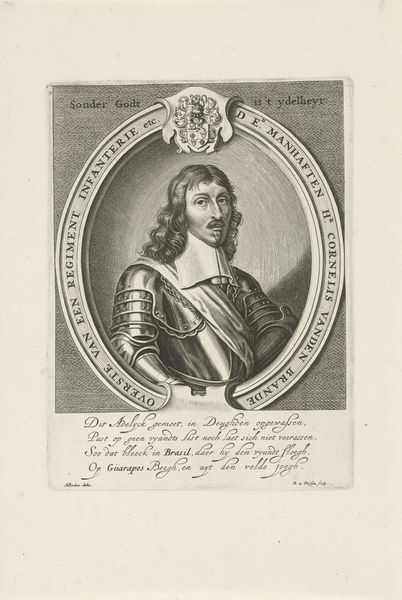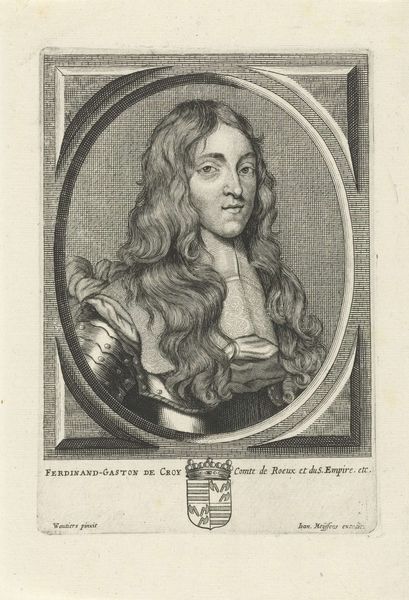
engraving
#
portrait
#
baroque
#
old engraving style
#
caricature
#
personal sketchbook
#
portrait reference
#
portrait drawing
#
engraving
Dimensions: height 88 mm, width 58 mm
Copyright: Rijks Museum: Open Domain
Curator: Up next we have a portrait of Charles Louis, Elector Palatine. This engraving, made sometime between 1648 and 1676, is the work of Frederik Bouttats. Editor: My first thought is about its intimacy. Despite being a formal portrait of nobility, the level of detail, rendered in the engraving, draws me in close. There is a certain melancholic vulnerability in his eyes, framed by that opulent, swirling hair. Curator: It is compelling, isn't it? Consider the historical context. Charles Louis spent much of his youth in exile during the Thirty Years' War. He eventually regained his electorate, but he was constantly struggling with the legacy of that conflict. His religious policies also made him quite controversial among his own subjects. One might then read his gaze as reflective of this turbulent life and struggle. Editor: Yes, but also the formal elements speak volumes! Look at how the oval border constrains the figure, almost creating a sense of being trapped. And the cross-hatching technique used creates tonal variety that enhances the overall sense of introspection, giving his image further presence. Curator: The visual language you're describing then could reflect the power dynamics at play. While Bouttats was the artist, this engraving likely circulated broadly, reinforcing certain established narratives about Charles Louis. Editor: Exactly, and what are we to make of that wonderfully rendered crest? It looks to me as though the composition intentionally elevates his station, by drawing one’s gaze up towards the subject, with the suggestion of supporting architecture below the figure and the imposing coat of arms, which are all arranged within the portrait. Curator: By studying these portraits, we can glean insights into the visual strategies of the period, and also begin to explore the construction of leadership identities in that early modern period, right? Editor: Precisely! The technical choices also reveal how image-making was crucial to projecting political power and also capturing the sitter’s individuality in these periods. This detailed engraving stands out not just as a representation, but as an engaging window into Charles Louis, revealing some elements of self presentation from this time.
Comments
No comments
Be the first to comment and join the conversation on the ultimate creative platform.

